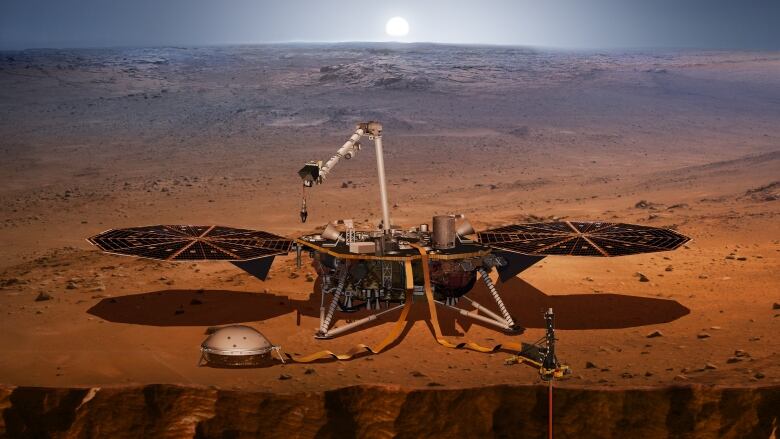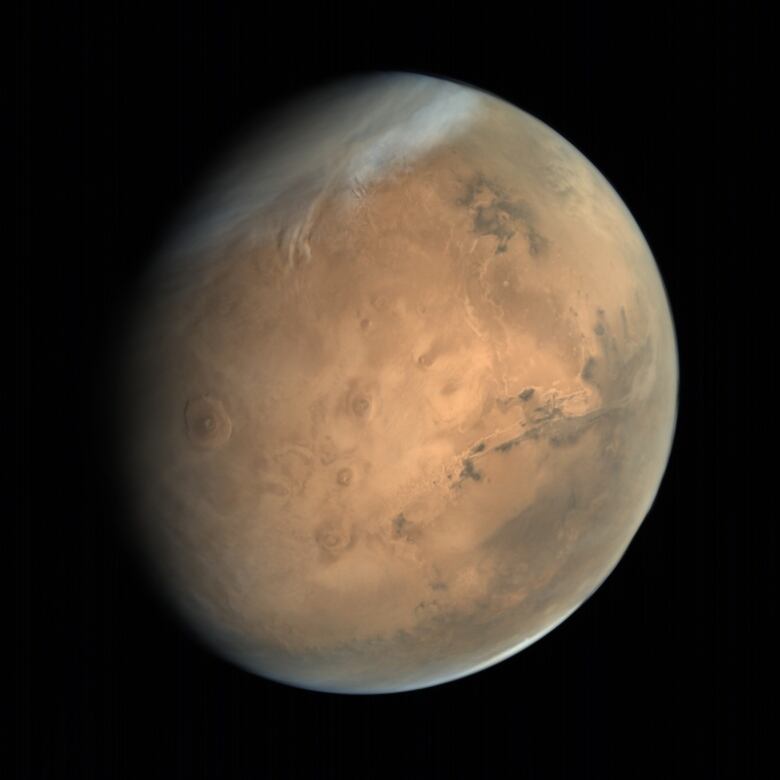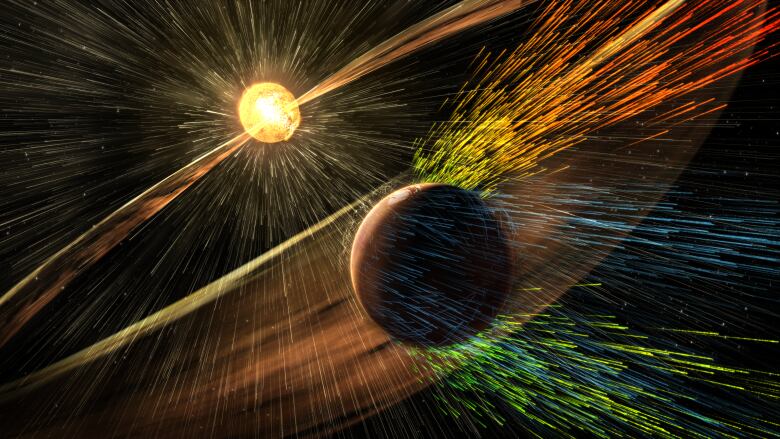Next stop Mars: Mission to take planet's temperature and measure 'Marsquakes' launching Saturday
NASA'S Mars InSight mission expected to mark scientific firsts as it probes the planet's 'inner space'

Mars is the only planet in our solar system that's home to a family of robots. And on Saturday, May 5, one more will be on its way to join its brethren.
NASA'sMars InSight is a one-of-a-kind mission, and its uniqueness begins at the launch pad: it will be the first planetary mission to launch from the Vandenberg Air Force Base in California. Missions typically use the location at Cape Canaveral, Fla., and travel eastward, but InSight will launch atop the powerful Atlas V rocket and move westward.
From there, the mission is expected to mark a series of firsts. It will be:
- The first to probe the planet's interior, including measuring earthquakes on Mars, known as Marsquakes.
- The first to measure Mars's negligible magnetic field.
- The first to launch tiny satellites, called CubeSats, into deep space.
"It's really exciting," Catherine Johnson, a professor at the University of British Columbia, who is a co-investigator of the international team measuring seismic activity, told CBC News. "We've waited a long time to put a geophysical mission on Mars."
Probing the depths
We're all familiar with the landscape of Mars: rocky, dusty, with deep craters and dormant volcanoes, including Olympus Mons, the biggest in the solar system. But understanding what's down below is what scientists are aiming for with this mission.
In particular, the team of researchers hopes to gain more insight into how a rocky body like Mars forms, as well as understanding potential tectonic activity of a planet that lacks activity like Earth.

"The mission is learning about the interior of Mars and so how Mars is formed and how it evolved as a rocky planet," Farah Alibay, a Canadian who is a systems engineer on Mars InSight told CBC News.
InSight has three main science instruments: a seismometer, a heat flow probe and a radio science experimentthat will provide information on the planet's inner core.
The seismometer will measure the planet's geological activity. Though Mars doesn't have any active tectonic plates as Earth does which produces earthquakes it does have faults that could move over time and cause Marsquakes. The instrument may also detect tremors as meteorites hit the planet.
"The instrument is sensitive to ground motions that are as small as the size of a hydrogen atom," Johnson said. "It's crazy tiny."
So she and her team will have to eliminate other potential sources. In order to do that, the lander is equipped with secondary science tools, such as a magnetometer that measures the planet's magnetic field.
Measuring Mars's magnetic field
Earth's magnetic field is created mainly as a result of the movement of its liquid outer core.
Mars doesn't have this type of mechanism to generate a strong magnetic field. It's believed billions of years ago it was much stronger. However, at some point it was lost, which allowed the solar wind to strip away its atmosphere, one that may have resembled ours today.

Magnetic fields are measured in nanoteslas. To put it in perspective, Earth's magnetic field is anywhere from 30,000 to 60,000 nanoteslas at the surface. The magnetic field of Mars, on the other hand, may measure anywhere from just a few hundred to a few thousand. The weak magnetic field is generated by magnetism locked in the planet's interior.
The lander will also be equipped with a hammer a heat flow probe that will essentially take the temperature of the planetat depths of up to three metres. It will be the first time the planet has been probed so deeply.
Making way for humans
Studying the interior of Mars and Marsquakes and the properties of Mars's rocks isn't just about unravelling the mysteries of planetary evolution. It's also preparing us for settlement.
"We'd like to know something about where quakes happen and how big they are and how often, if we're going to send astronauts to Mars in the future," Johnson said. "So it actually has practical applications for human-based exploration of Mars."
She and her team have been preparing for this mission for five years. They've been running scenarios, analyzing existing data from previous missions and preparing for data they may collect.
Of course, there will be data they don't expect, and that's also part of the excitement.
"Any time you go somewhere to measure something or see something that you've never been able to see before, there are the things you expect to address," Johnson said. "But I think for me the exciting thing is, what is it that's going to be a surprise?"












_(720p).jpg)


 OFFICIAL HD MUSIC VIDEO.jpg)
.jpg)



























































































